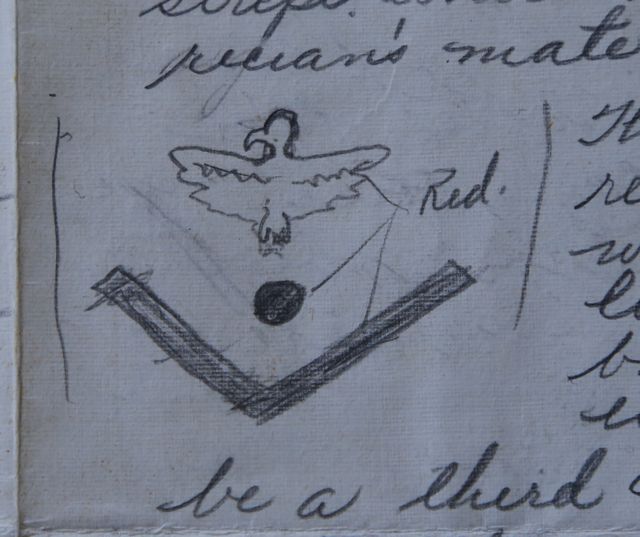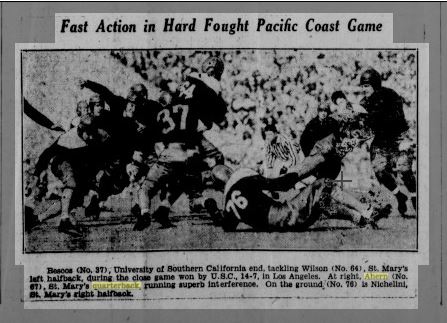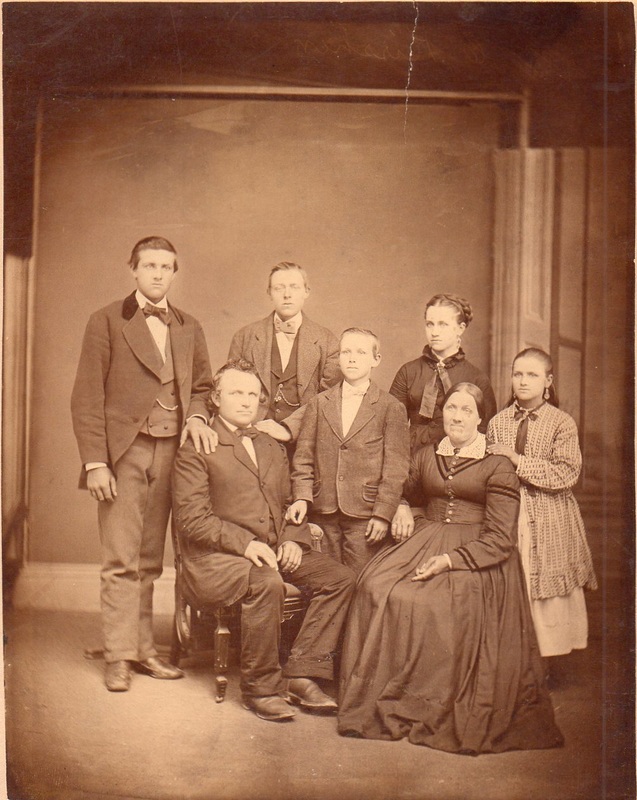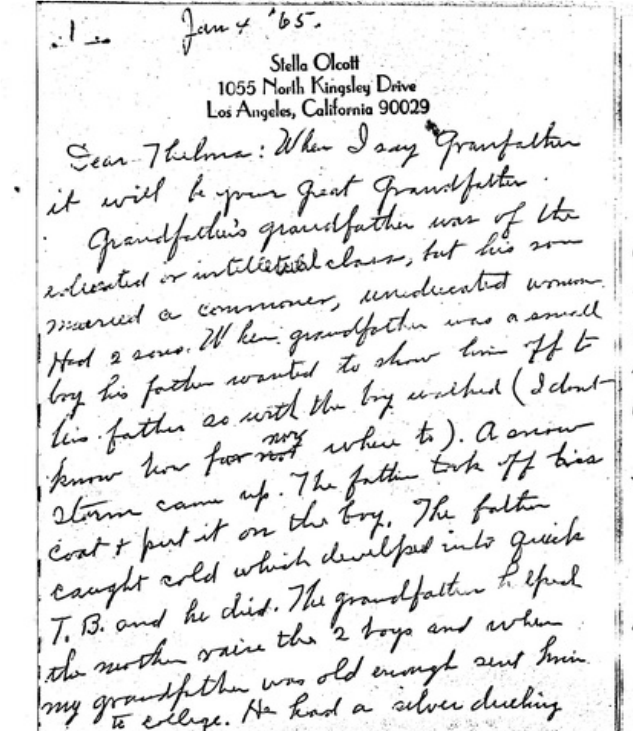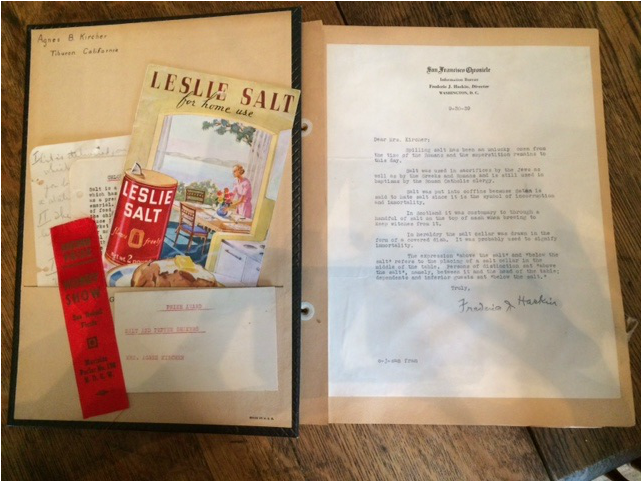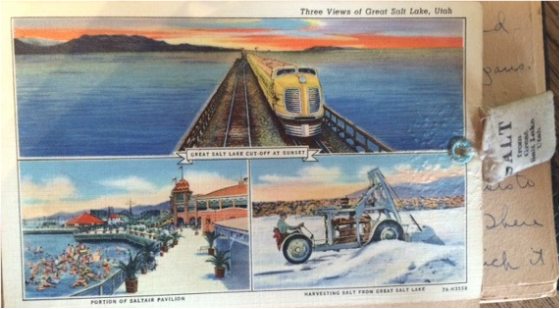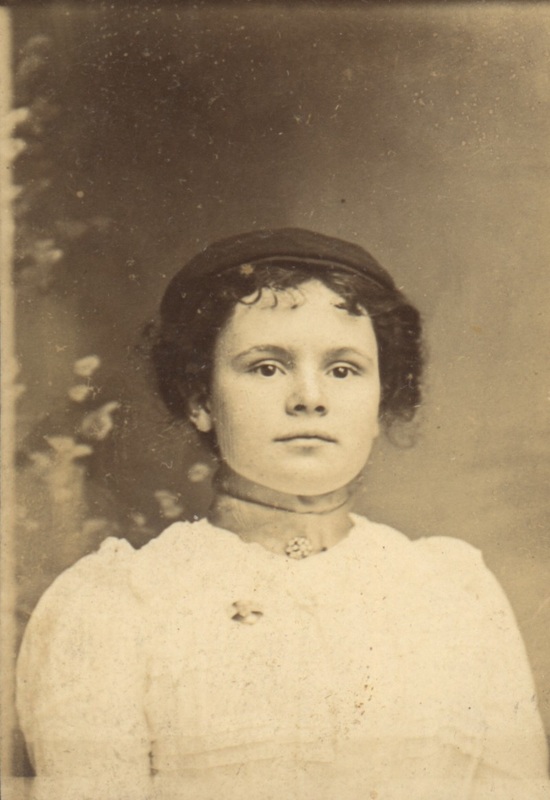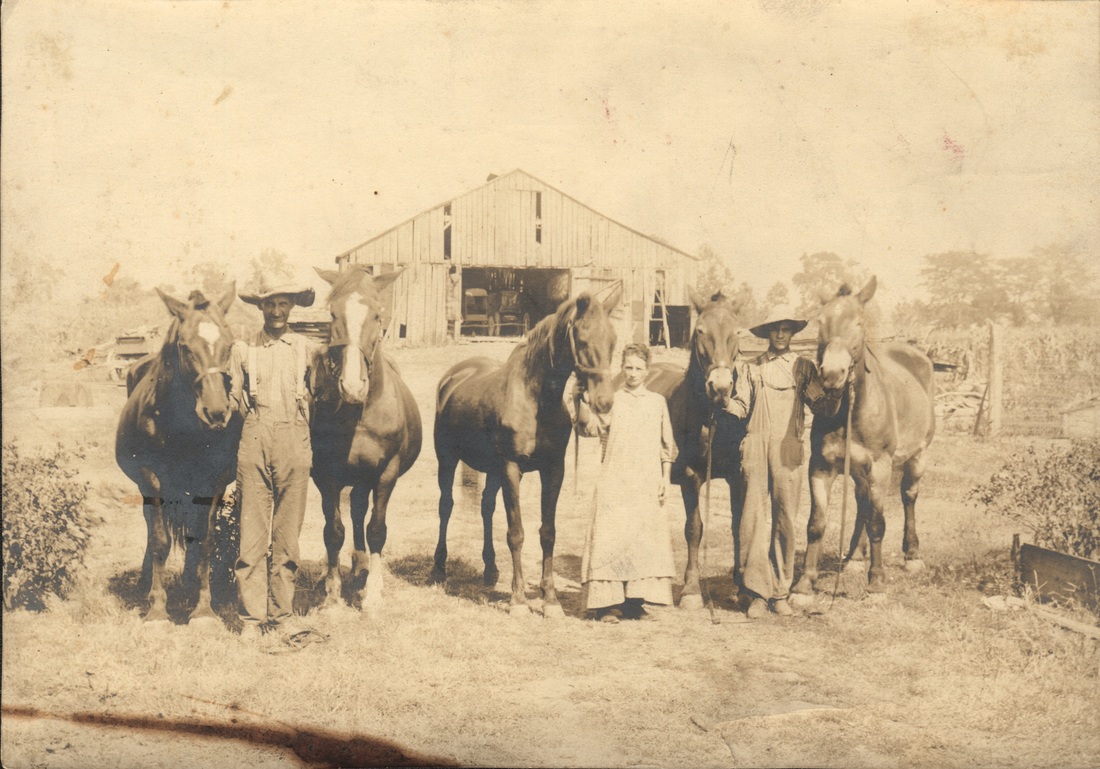|
I'm in California now, doing a little genealogy research and visiting family. I've been spending some time with my cousins and my Auntie Wilma, who was married to my mom's brother, Warren. Wilma has a collection of letters Warren wrote to his family during World War II. A couple of years ago when I visited, she pulled out a bag of letters and I set to work putting them in chronological order.
The letter I post here was written close to today's date 74 years ago. Warren's birthday would be later this week. I miss him very much. He was a wonderful father, son, brother, and uncle. August 24 [1942] Dear Rosie and Geo,[i] By the time this letter reaches you Geo will have probably left for San Diego but I’ll include his name in case he is still there. I know how bad you must feel to see him go and how bad he must feel to leave. It was better however, to join the Navy now than let the Army get him. Send me his address and I’ll write him as soon as I get it. I don’t know what school the selection officer will give him but I sure wish he could come back to Detroit and study with me for electricians mate. Four other fellow and myself left San Diego for Detroit and we certainly had a lot of fun I’ve never had better food than that we got on the train. We were served in the diner, allowed a buck a meal. From the following paragraphs you might assume that there were only four of us on the train but it was full of sailors from about ten other companies, some going to Rhode Island to gunnery school and some to Radio school at Indianapolis. Every station we pulled in to all of the sailors including yours truly would be out talking to the girls. Speaking of girls, there are sure some honeys here and they’re certainly friendly. A lot of the boys have already been invited by them to their homes for dinner. For some reason the whole town has a friendly attitude towards sailors, we never have to ride the streetcar although they are free. We just step off the curb and within two minutes someone will give us a lift. It doesn’t cost a sailor a cent to get drunk, the men here will set him up as many as he wants. We can get our meals and sleep at the U.S.O. free. The show rates are cut in half for us. As you know we are studying for electricians mate third class. We started today and these are our subjects for the first eight weeks: General Instruction Electrical Theory Mathematics, Wiring Shop tool Instruction, Electrical Machine Lab. I’m sure going to try to make the grade, if I make a 3.5 average which corresponds to about 87% I’ll get a crow and one stripe which signifies electrician’s mate third class. [at this point in the letter there is a hand drawn illustration of the Navy logo he describes.] This has a faint resemblance to what it looks like the round ball means electrician. I would be a third class petty officer. I would sure be proud to bring it home and show Dad. I would like Vernice[ii] to see it too. I haven’t got an answer from her as yet but maybe they have it down to San Diego and they haven’t forwarded it. I guess I’d better write her again soon and give her my new address. We have liberty here every weekend from noon Saturday until midnight Sunday. I had a swell time here on my first liberty. Our quarters are pretty cramped here as at Kidd. There are four companies here in a comparatively small building. The bunks are three high, the firs one is about 8” off the floor and the top about 6’ off the floor. I’ve got a bottom one so if I fall out of bed I won’t break my neck. The weather here is certainly queer. When we first arrived it was so hot we slept without blankets and the last few nights have been very cold. I wish it would make up its mind so I could get a good sleep. Well, Sis, it’s nine o’clock and I want this letter mailed tonight. I’d sent it air mail but I haven’t a stamp and won’t be able to get one until tomorrow. If George is still there I wish him all of the luck in the world and hope to see him soon. Write soon, Sis as I would like to know what you two are doing and how everything is going in general. Give my love to Mrs. Powers.[iii] Say hullo to everyone. Your brother, Warren [i] Letter written to his sister, Rosemary Brown Hartman and her husband, George Hartman who was a very good friend to Warren. They had played soccer together. [ii] Might have been a girlfriend of Warren’s in San Francisco. [iii] Mrs. Powers is George’s grandmother. She raised George and was more like a mother to him than a grandmother.
0 Comments
For Christmas of 1999, I sent my father a tape recorder and a list of questions. (Was this a gift for him or for me? I’ll let you be the judge of that.) But over the next few months and years, Dad answered the questions and I transcribed his words. I’m periodically posting some of his thoughts.
This section has to do with when the family got a radio. Dad talks about listening to football on the radio, and tracking the game. As someone who grew up in the TV generation, I appreciate the resourcefulness of radio sports fans. “We got a radio ourselves. We had a radio in the living room and we began to listen to things. Football, of course, was important. There were no professional teams. They did not come until 1945, after the war. But we did have colleges. Cal played Stanford. USF played St. Mary’s. St. Mary’s and Santa Clara were always a big deal. And they played on Saturdays and on Sundays. “And we would listen to our radio and put out a chart on the floor of the lined football field. 10 yards., and keep a little button and watch the ball go up and down the field, depending on whether St. Mary’s had made some yards or didn’t make some yards. “Football rules were different in those days, too. There were no center stripes for putting the ball in play. If you… wherever you were tackled, that’s where you put it. If you were tackled three yards from the sidelines, you’d start the next play three yards from the sidelines. If you ran out of bounds, you started the play one yard inbounds. So that sometimes the center was on the end and all the rest of the line was sticking over toward the center of the field. Most of those games were played 6-0, 6-7, or 13-6. You never heard of a game going over 20 points.” Tom Kircher, recorded sometime in 2000. I selected this particular section for a couple of reasons. I presented a session at the Northwest Genealogy Conference last week, “Telling Their Story When They Left No Stories.” One of the points I make is to think about everything in your life – work, clothing, entertainment, sports, religion, politics and more. If you do it or think about it, your ancestors probably did, too. As fall approaches teams both professional and amateur are gearing up for a new season on the gridiron. This memory from my dad speaks to one aspect of his life. Did your ancestors have any interaction with athletics, either as a player or fan? I’m on a research road trip. My husband found the recordings of my dad on his computer and burned some of them to CD for us to listen to in the car. Dad passed away eight years ago, but it sure is a treat to get to hear him tell me a story in his own voice. And I so love my husband for wanting to listen, too. As a bit of an aside, when Dad talks about football in this piece, he mentions St. Mary’s a couple of times. I wish I had followed up with Dad about why St. Mary’s seemed particularly notable. It wasn’t his alma mater. But it may have been his family particularly followed St. Mary’s because his mother’s cousin, Jim “Sid” Ahern, played for the Gaels. I can’t help but wonder if the game against USC was one Dad had listened to and tracked with his grid and button. Go Gaels! I recently went through a file which came from my dad’s house, labeled “Kircher Genealogy.” In it was a photo copy of the letter I have transcribed below, written on the stationery of Stella Olcott as shown in my transcription. But it seems from other papers in the file, that there are two related letters. One is a type-written letter from Thelma Van Alsytne to “Dear Aunt Agnes,” dated February 22, 1965. The second paragraph of the typed letter says “One of the things I have been wanting to do is to send you a copy of a letter from Stella Olcott that came to us in January. I’m just wondering if you may have asked her about our ancestors. If so, perhaps she meant to write this information to you…” The second letter which is undated, appears to be written in the hand of Stella Olcott to “Dear Agnes” in which she says “Thelma Van Alstyne wrote me that she sent you a copy of the letter I wrote her, in answer to her request to know something about our grandparents…” I infer from this that my grandmother, Agnes Bradley Kircher, might have written to Stella Olcott, requesting information on the Kircher family, Agnes’ in-laws, and perhaps Stella got mixed up in her correspondence and thought Thelma was the one asking about the family. Regardless of who asked the questions, I am glad I have the snippets of family history presented below. I have transcribed the letter as written. The footnotes are my educated guesses, based on my research, as to who Stella is referring to. After the completion of my transcription, I have written some notes and ideas for further research, should any Kircher or Frühauf descendant wish to follow up. Jan 4, [19]65 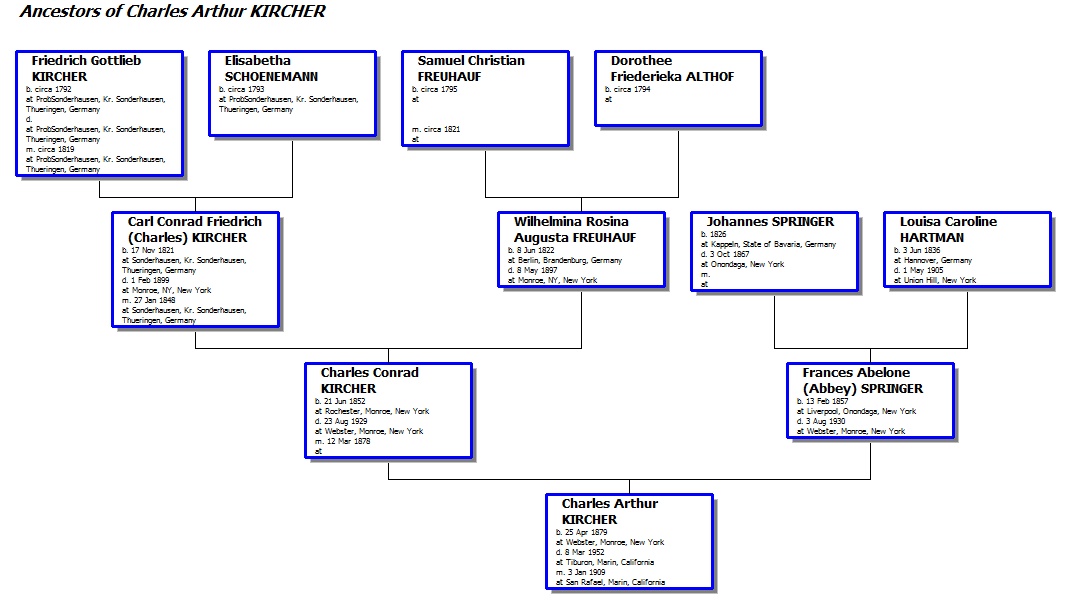 Ancestral chart of my grandfather, Charles Arthur Kircher. For reference, Stella Olcott is the daughter of Anna Kircher Olcott, older sister of Charles Conrad Kircher. Thelma is the daughter of Stella Mae Kircher Wooster, sister of Charles Arthur Kircher Ancestral chart of my grandfather, Charles Arthur Kircher. For reference, Stella Olcott is the daughter of Anna Kircher Olcott, older sister of Charles Conrad Kircher. Thelma is the daughter of Stella Mae Kircher Wooster, sister of Charles Arthur Kircher Dear Thelma[2]: When I say Grandfather[3] it will be your Great Grandfather. Grandfather’s grandfather[4] was of the educated or intellectual class, but his son[5] married a commoner, uneducated woman. Had 2 sons. When grandfather was a small boy his father wanted to show him off to his father so with the boy walked (I don’t know how far nor where to). A snow storm came up. The father took off his coat and put it on the boy. The father caught cold which developed into quick T.B. and he died. The grandfather helped the mother raise the 2 boys and when my grandfather was old enough sent him to college. He had a silver dueling sword. A college relic. It was given to Uncle Gustave.[6] He gave it to your grandfather[7] I think. [Aunt Helen doesn’t remember having seen it, though. T.][8] During that 1st year in college my grandfather’s mother[9] married a commoner and maybe Grandfather didn’t do too well in college, however being a good reader, when he visited us he brought a history of one of the French-German Wars to read. However his grandfather was disgusted & did nothing more for the boys. Some way, Grandfather became a dressmaker and his brother[10] a tailor. Grandmother[11] was a commoner and worked as a servant for Emperor W’s mother. She was born in Berlin. When she and Grandfather married they lived in Hamburg. Mother[12] told me these things so long ago I am not sure of them. From here on I am sure. Both Grandfather & his brother had some rentals. One of the many French-German wars was in the air. GrandF & his brother & the husbands of two of Grandmother’s sisters discussed going to America. Those 4 men and some (I don’t know how many) others decided to go. They got their money into cash, bought their tickets, Grandmother had a baby[13]. Grandfather knew some people who had gone to Rochester, being (at least thinking) he was the boss of the group he said they would go to Rochester, a commercial city. [my pen has gone dead). They got the tickets were leaving at Hamburg. The day they were leaving government men came to draft any man over 21. The men gave the tickets to the wives, told them to get on the boat and that they would not show up until the boat had left Eng. A sail boat they were on the water 6 weeks. Grandmother’s baby died & was buried at sea. When they moved to the farm in walking distance from Lake Ontario[14] Grandmother would fix picnic lunches for them, but she never went to the lake. While they were on the boat some of the men were farmers & had heard of the fine farm land in So. Illinois & decided to go there. Grandmother’s 2 brothers-in-laws were among these farmers. So when they reached (I have got a pen) N.Y. the farmers bought tickets to S. Ill. Grandfather said to Grandmother “You will never write to them.” She never did. Grandmother’s name was Fruauf (? sp) means Early up. Mother did not know what the brother-in-law’s names were. Grandfather & his brother bought apt houses. Did well with their tailoring. But grandfather, having drunk beer in Germany, got to drinking hard liquor. When sewing machines were invented, they either had to buy a sewing machine or get land. Neither knew a hoe from a spade, but Grandmother wanted to get Grandfather away from the drink, so told Mother to tell her Father to get a farm. Mother said she wouldn’t do it. She didn’t want to be a (I have forgotten what she called farm people, not hillbillies, but something like that). But in Germany anyone who owned land was some body. Having no idea how to pick land, Uncle Chas & Julius said he got the stoniest 80 in NY state. Then the Civil war came on. Grandfather had left Ger. to escape war, he wasn’t going to fight in U.S.A. So he paid $300.00 for a substitute. It was then they knew what it was to be hungry. From there on I guess you know it as well as I do. If there are any other questions ask them. Oh yea, I guess I’ll tell one more thing. When they moved to the farm Grandfather got to gambling, then some Lutherans had a revival in the school house. Grandfather went joined the church, never drank nor gambled after that, went to church every Sunday & Grandmother taught a S.S.[15] class. The whole service was in German. When Grandfather (after Grandmother died) came to Kansas for a winter my father said “Stella wouldn’t you like to take Grandfather to Vassar (about 3 miles north of Lyndon) there are 2 German churches there.” “Oh yes” said I. On the way I asked Grandfather which church he wanted to go to. “Oh it doesn’t make any difference” said Grandfather. “In one the reacher wares a white tie, in the other he wears a black tie.” Yes that is all. Will answer the rest of the Xmas card next Xmas. Love, Stella Olcott My hand has a little arthritis that’s why my writing is so scratchie. This is the end of the transcription. Below are some brief notes about further research: Also in the file is a transcription of a record, written in German, translated as follows: “According to the statement of the baptismal records in the Sophien Church, a daughter was born to the shoemaker Mr. Samuel Christian Frühauf by his wife Dorothee Friederike nee Althof on the eigth of June in the year One thousand eight hundered twenty-two at 4 a.m. She received holy baptism on the 23rd of August and the names Wilhelmine Rosine Auguste. Baptismal witnesses were: 1. Shead? Shittag 2. Frau Bangerman 3. ??? Petzoldt This is hereby certified to be authentic and lawful. Berlin the 27th of January 1848 and the first preacher in the Sophien Church” I have begun to research in some German church records I found on FamilySearch.org and found an index record for a christening on 8 May 1825 at the Sophien Church in Berlin for Marie Amalie Freuhauf, daughter of Christian Samuel Freuhauf and Marie Dorothee Althoff. https://familysearch.org/pal:/MM9.1.1/NF7J-329?from=lynx1 Another record from what appears to be the same church is for a christening on 25 January 1824 for Johann Samuel Freuhauf, son of Joh. Christian Freuhauf and Dorothea Friedericke Althoff https://familysearch.org/pal:/MM9.1.1/NF7J-N82?from=lynx1 I do not have the original records, but it may be that these people are siblings of my great-great grandmother, Wilhelmine Rosine Auguste Frühauf, and might be “Grandmother’s 2 brothers-in-law” (or the sister who is married to the brother-in-law) who went to farm in Southern Illinois. I think it would be worthwhile to search for a marriage record for Marie Amalie Freuhauf and see if she and her husband could be located in southern Illinois in the 1850s or 1860s and to see if Johann Samuel Freuhauf might also have become a farmer in Illinois. I would also suggest searching in family trees on Ancestry and FamilySearch to try to locate researchers looking at Freuhauf family members. And DNA testing may prove fruitful in finding additional family members. [1] Stella Olcott, born 9 August 1881, is the daughter of Anna Kircher and Elisha Olcott. [2] Thelma is Thelma May Wooster VanAlstyne. Her mother was Stella Mae Kircher Wooster. Stella Wooster was the daughter of Charles Conrad Kircher, born 21 Jun 1852, and Frances Abelone Springer (my great-grandparents.) Stella Wooster is the youngest sister of my grandfather, Charles Arthur Kircher’s. [3] The “Grandfather” Stella Olcott refers to in this letter is her maternal grandfather, Carl Conrad Friedrich “Charles” Kircher, born 17 Nov 1821 in Germany and died 1 February 1899 in Webster, Monroe, New York [4] I think this is Fredrich Kircher’s father (see footnote 5 below) but I have no idea what his name is. [5] I believe this son must be the father of Carl Conrad Friedrich “Charles” Kircher (CCFK). CCFK’s father was Friedrich, born circa 1792 in Germany (ProbSonderhausen, Kr. Sonderhausen, Thueringen, Germany. I have a baptismal record which states "On the seventeenth of November one thousand eight hundred and twenty-one --- 17th November 1821 --- a son was born to the ??? Friedrich Gottlieb Kircher by his wife Elisabetha nee Schonemann. He was baptized on the 9th of December and was named Carl Conrad Friedrich. That this corresponds with the church-book is dutifully witnessed. Sondershausen the 18th January 1848 [6] I believe this is Gustave Kircher, born 17 Nov 1860 in Monroe County, New York and died 24 March 1935 in Los Angeles, California. Gustave was the son of CCFK and his wife, Wilhelmina Rosina Augusta Freuhauf Kircher. [7] This would be Charles Conrad Kircher, “Uncle Gustave’s” brother [8] The note in brackets appears to be in a different hand, and given the “T” at the end of it, I think Thelma wrote this note. The Aunt Helen she refers to is Helen Louisa Kircher Hilfiker, daughter of Charles Conrad Kircher and Frances Abelone Springer Kircher. [9] This woman would be the wife of Freidrich Gottlieb Kircher. Her name was Elisabetha Schönemann [10] “Grandfather’s” brother is Julius Kircher, born circa 1824 in Germany/Prussia and died 16 August 1863 in Rochester, Monroe, New York [11] “Grandmother” is Wilhelmine Rosine Auguste Frühauf, born 8 June 1822, daughter of the shoemaker Mr. Samuel Christian Frühauf [12] Anna Kircher Olcott [13] This child was born 6 April 1848 in Mittenwalde near Berlin. She received holy baptism by deacon Federmann of St. Moritz Church and given the name Agnes Emma Laura [14] I believe this refers to the farm on Basket Street near Webster, Monroe, New York [15] I presume this refers to a Sunday School class My grandmother, Agnes Bradley Kircher, was a collector. She collected hatpin holders. She collected napkin rings. She collected teacups. Many people collect salt shakers, but I don’t have any evidence that Agnes did. She did, however, collect something salty. One of her most unusual collections in contained in a simple scrapbook. For some unknown reason, Grandma Kircher collected articles and writings about salt. The first page of the scrapbook is a letter from Fredric J Haskin, director of the Information Bureau of the San Francisco Chronicle, with offices in Washington, D.C., dated September 30, 1939 in which he puts forth six unusual facts about salt. Was Mr. Haskin’s letter a response to an inquiry from Grandma Kircher? I have no idea, but through this letter I’ve learned, among other things, that “Salt was put into coffins because Satan is said to hate salt since it is the symbol of incorruption and immortality,” and “In heraldry the salt cellar was drawn in in the form of a covered dish. It was probably used to signify immortality.” More pages of the scrapbook hold a hand-copied recipe from The White House Cookbook from 1898 for Salt-Rising Bread, numerous newspaper clippings including “Does Salt Determine the Complexion?”[i] “Salt serves Japanese as War Weapon,”[ii] and a bit of celebrity news about why Gloria Swanson eschews salt[iii] and why Errol Flynn picks up every grain of any salt he happens to spill because apparently a handful of salt has saved his life on many occasions.[iv] But wait! There’s more – an article about the Exposition Flyer crossing the Bonneville Salt Flats[v] and a recipe for the “’Nightmare Special’ – in a big bowl, first a bottom layer of French fried potatoes. On top of that a scoop of chocolate ice cream, a slice of fresh pineapple, a blob of whipped cream and a cherry. Finally a generous sprinkling of ketchup, pepper and salt.”[vi] There are six pages in Agnes’ own hand about salt, and several pages of dictionary definitions and Bible verses about the briny condiment. Pasted in the book is a picture postcard with three illustrations of Great Salt Lake Utah, complete with the attached mini cloth bag of salt from the lake. What prompted this collection of salt-related items is beyond me, but apparently someone besides Grandma Kircher was impressed with the collection – tucked between the pages is a red ribbon “Second Prize – Hobby Show, San Rafael Fiesta, Marinita Parlor No. 198, N.D.G.W.”[vii] But I gotta ask –salt???? What about the genealogy scrapbook you might have spent your time on? Ah, well. Congratulations, you winner, you! [Tiny follow-up. I wrote this blog post and looked through the scrapbook to find a page to illustrate the blog post. And lo and behold, tucked inside a pocket in the front cover was a card “Prize Award – Salt and Pepper Shakers, Mrs. Agnes Kircher” Maybe she did collect them after all] [i] Clipping dated 1939 by American Weekly, Inc. [ii] Article dated Monday, October 17, 1938 from an unnamed newspaper [iii] San Francisco Call-Bulletin, Thursday, September 28, 1939 [iv] No identification as to date or source of this article [v] San Francisco chronicle, Sunday, September 10, 1939 [vi] From some publication identified as “Pathfinder”, Sept. 16, 1939 [vii] N.D.G.W. stands for Native Daughters of the Golden West. For more information see http://www.ndgw.org/ Researcher’s note - maybe something to follow up on here – might the Marinita Parlor 198 of N.D.G.W. have some paperwork on my grandmother? I’ve sent off an email. I’ll keep you posted if anything interesting comes from it. dIn honor of Mother’s Day, I’d like to share some stories written by my husband’s grandmother, Nellie Kathleen Aldrich Roddy. These stories are excerpted from a handwritten manuscript which starts “My grandson, Mark Robert Roddy, asked me to write about my early childhood days, so I’ve tried to go back and remember my time from 1907 thru about 1930.” “I was born 9 Dec 1907 in our home on East High St. in Springfield, Ohio. I already had a sister, Mildred born on Maiden Lane, Springfield, Ohio on 14 Oct 1906. My brother, Harry P. Aldrich was born 18 Mar 1909 on Lagonda Ave, two months after our father Harry P. Aldrich died, 4 Jan 1909. “My mother, Hannah e Allender Aldrich was born 4 Nov 1883 near Romney, W. Va. and was left with three small children to care for alone. She could have placed us in a Home operated by the Junior Order of American Mechanics Lodge, that my father belonged to, but she never did. She told me later, years later, that if she had had to, she would have placed us in the Home, which was located in Marion, Ohio, and got work close by, as parents were not permitted to work in the Home with their children there. However, instead she rented a large house near the shop area where there were many working men and operated a Hotel, on a small scale. Her brother Riley and some of his friends rented rooms and slept and ate there, and during dinner time, many other workers ate meals there during their work days. “With three small children to care for, all under three years of age, feed us, make our clothes and do all that was necessary to grow us up, she was a busy young woman about 26 years of age. She had hired girls to help her but she said some of them were “tired” girls… “She was very frugal and could “make out” on what little income women were able to earn in those times. City life was not to her liking, the only real and decent way of life was farming. She rented a farm in the area of Enon, Ohio and with the help of her brother Riley, took up farming with her little family…. “My mother was an exacting and honorable taskmaster and would not tolerate slipshod farming nor mistreatment of the animals, mostly horses, all all farming then depended on “horse power.” My mother then gave up farming, her love of a way of life, due to lack of help and moved back to Springfield with her little family.
“There in town she bought a large double house (an almost unheard of event for a widow with three children) on W. High St., and rented one half of the house and we all lived in the other half. This must have been in 1911 or 1912 because I went to Grayhill School a few months and I would have been 6 in Dec. 1913.” I love to have these stories of Hannah written by her daughter. In them you can hear a daughter’s pride and admiration for her mother and see the strength and fortitude of a young woman, dealt a pretty tough hand, who got up every morning, put one foot in front of the other, and did what needed to get done. Hats off to you, Grammy Hannah and Grandma Nellie. 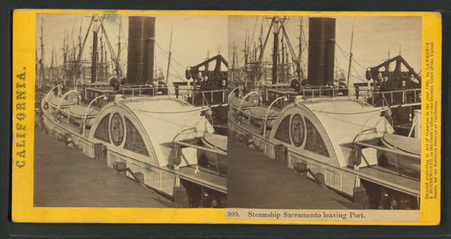 Steamship Sacramento Leaving Port, by Thomas Houseworth & Co. -- Publisher [Public domain], via Wikimedia Commons Steamship Sacramento Leaving Port, by Thomas Houseworth & Co. -- Publisher [Public domain], via Wikimedia Commons I’m a knitter and I love one scene written by Annie Proulx. It cracks me up every time. "I can tell you about the time buddy was ripping along down the Trans-Canada knitting about as fast as the truck was going when this Mountie spies him. Starts to chase after him, doing a hundred and forty km per. Finally gets alongside, signs the transport feller to stop, but he's so deep in his knitting he never notices... Mountie flashes his light, finally has to shout out the window, 'Pull over! Pull over! So the great transport knitter looks at the Mountie, shakes his head a bit and says, "Why no sir, 'tis a cardigan.' "[1] The book is of course, The Shipping News. Reading the shipping news in the newspaper might not be quite as giggle-inducing, but could provide some wonderful details to include when writing your family story. Do you have ancestors who sailed from Europe to the New World or perhaps from Boston or New York, bound for California? If you’ve got a date and a ship’s name for such an adventure you may find some specifics about the voyage. I knew from my great-grandmothers application to Native Daughters of the Golden West, a California lineage society, that she arrived in San Francisco in May 1867 aboard the vessels Ocean Queen and Sacramento. With the month and year and ship names, I scoured the newspaper looking for either of those ships arriving in San Francisco, and on page 3 of the Daily Alta California of May 25, 1867 in the Shipping Intelligence column, “Arrived, May 24, Stmr Sacramento, Cavarly, 14 days 2 hrs from Panama.” [2] But wait, there’s more! (Oh, yes… always read the entire paper!) On page 1 I found “From Panama: Arrival of the Steamer ‘Sacramento,’” a 1000+ word article providing details of the Sacramento’s latest round-trip San Francisco-Panama voyage. She “left Panama May 10th at 3:56 p.m. with 590 passengers” and assorted freight, mail and baggage. She stopped at Acapulco, Manzanillo, and Cape St. Lucas on her northward journey, and “experienced fine pleasant weather the entire voyage. Passengers and crew all well.” Among those 590 passengers were “Miss M. Hearn and bro,”[3] my great-grandmother, Mary Agnes Ahern and her brother, Henry. Further details from the account told me that the Sacramento was carrying freight from the Ocean Queen from New York, and in a “Passengers Sailed” column in the New York Times on page 8 of the May 2nd issue, I found two exciting names – “Miss Mary Hearn and brother.”[4] OK 1 ½ exciting names – poor Henry! memorialized in two newspapers as “brother.” I was lucky that my great-grandmother traveled first class on these ships so her name was listed in the newspaper, but even if she’d been in the nameless hundreds in steerage,, the shipping news columns could tell me much about her journey. Read The Shipping News (book) and the shipping news in the paper. Search for “Passengers Sailed,” “Arrivals,” “Marine Intelligence,” and more. It’ll help to fill out more stories of your ancestors’ lives. [1] The Shipping News: A Novel, Annie Proulx, Simon and Schuster, 2008 [2] Daily Alta California, Volume 19, Number 6280, 25 May 1867, page 3, accessed 19 April 2016 from the California Digital Newspaper [3] Daily Alta California, Volume 19, Number 6280, 25 May 1867, page 1, accessed 19 April 2016 from the California Digital Newspaper [4] “Passengers Sailed” New York Times 02 May 1867, page 9, accessed 19 April 2016 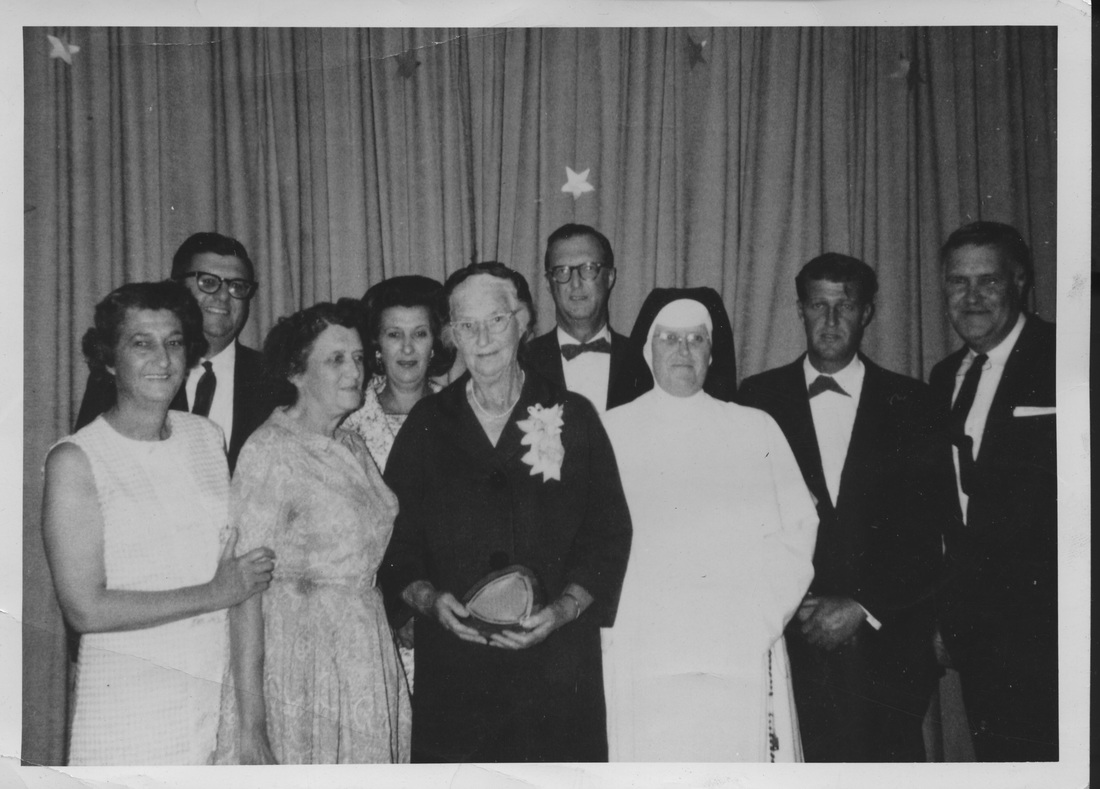 Agnes Bradley Kircher, surrounded by her children, when she was awarded Marin County Senior Citizen of the Year - Barbara, John, Mary, Kathryn, Agnes, Tom, Bertha, Phil and Charlie Agnes Bradley Kircher, surrounded by her children, when she was awarded Marin County Senior Citizen of the Year - Barbara, John, Mary, Kathryn, Agnes, Tom, Bertha, Phil and Charlie I read Randy Seaver’s Genea-Musings blog from March 23, 2016[i] in which he wrote about his grandfather. Randy doesn’t have a terribly positive impression of this ancestor, but his blog post got me thinking about why we might like some ancestors more than others. Do I have ancestors I don't "like"? Would I like them more or less if I knew more or less about them? Were some of them creeps but those qualities don't show up in the records? Or did one of them do one bad thing, and that's the only record I’ve found, so I have a bad impression, but in reality the rest of their life was good? Or were some of them great in public, in the records I do see, but horrid people behind closed doors? While I ponder the greater implications of those questions on my research, for today’s Sunday Stories I’d like to write about one ancestor I do have a very high opinion of, and I’m pretty sure most everyone who knew her. or who knew of her, would agree. Mary Agnes Bradley was born “at the foot of the Wildcat”[ii] near Petaluma, California in 1888,[iii] the middle child in a family of seven surviving children, with a few other siblings lost fairly young.[iv] When she was three, her family relocated to Tiburon when the railroad which employed her father moved its headquarters there. Agnes spent the rest of her life in the town on the shore of San Francisco Bay. She married Charles Kircher in 1909[v] and they raised their eight children across the street from the bustling railroad yards, in a three-story house with a view straight out the Golden Gate. I think her strong Catholic faith was a legacy from her parents, and she lived that faith through good works her entire life. To share just a few of her endeavors… Agnes was a founding member of the board of the Tiburon Sanitary District, serving as secretary from 1926 to 1958, and later as its president.[vi] She and Charlie were instrumental in getting one of the first sewage treatment plants on San Francisco Bay constructed in Tiburon, knocking on every door and button-holing the citizens of Tiburon to vote for the project. Her family fondly referred to it as “Ma’s Sewer Plant.” We’d pass by it every time we went to visit her when I was a little girl. (In fact when my dad first brought my mother home to meet his folks, he of course had to point out Ma’s Sewer Plant. My mom wondered just what kind of a family this was whose mother had her own sewer plant!) Agnes was an election judge at the polls in Tiburon.[vii] She was involved with the Tiburon Mothers’ Club.[viii] She was a member of the Young Ladies Institute, a Catholic women’s service organization. She was a manager of the Village Salvage Shop in Tiburon, a joint venture between the local Catholic, Presbyterian and Episcopal churches and the PTA. She served on the juvenile probation committee and the citizens’ advisory committee for planning. She was a charter member of the Tiburon Peninsula Club and the Belevedere-Tiburon Landmarks Society.[ix] For these and countless other efforts, she was named Marin County Senior Citizen of the Year in 1966.[x] Agnes’ influence continued on to her children and grandchildren. My dad drove people to the Handicapables Luncheons for years in Marin and later delivered Meals on Wheels in Benicia for 20 years. My aunt Mary volunteered at the Gift Shop at Mission San Rafael Arcangel. My sister, Tori, is a regular volunteer with the St. Vincent de Paul Society. I’ve had the chance to be on the board of the Catholic Seafarers’ Center and the Association for Catholic Childhood in Seattle. In fact when ACC was looking for a volunteer to take over as treasurer, I have no doubt that Grandma Kircher, seated on a perch in heaven next next to a choir of angels, had somehow tied an invisible string to my hand and yanked that sucker right up. But even with all those good works in Agnes’ life, I think the thing that inspires me most was something my dad told me she used to say, “When you come to the “but” in the sentence, stop. ‘She’s a nice girl, but….?’ No. If she’s a nice girl, she’s a nice girl. Period. You don’t need to go beyond the ‘but’.” Words to live by. I am honored to be the granddaughter of Agnes Bradley Kircher, and I strive to live up to her example. [i] http://www.geneamusings.com/2016/03/100-years-ago-today-my-great.html [ii] Personal recollection of Thomas B Kircher to author [iii] Church records of St. Vincent de Paul Catholic Church, Petaluma, Sonoma, California [iv] Household of Patrick Bradley, Year: 1900; Census Place: Belvedere, Marin, California; Roll: 93; Page: 11A; Enumeration District: 0061; FHL microfilm: 1240093; Household of Patrick Bradley, Year: 1910; Census Place: Sausalito, Marin, California; Roll: T624_88; Page: 9B; Enumeration District: 0050; FHL microfilm: 1374101 [v] Marin Tocsin, 9 January 1909, page 1, “Miss Agnes Bradley and Charles A. Kircher Wed” [vi] Ebb Tide, 1 June 1966 [vii] Marin Journal, Volume 52, Number 33, 13 August 1914 [viii] Sausalito News, Number 5, 29 January 1932 [ix] Marin Independent Journal, 10 May 1966 [x] Ebb Tide, 1 June 1966 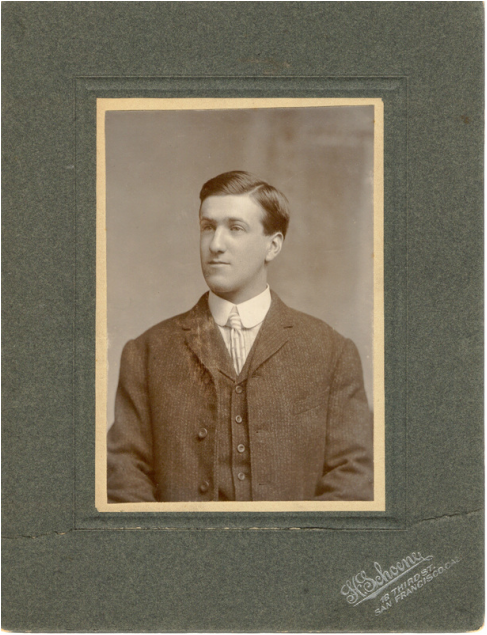 In 1999, stuck for thinking of a Christmas present for my father, I sent him a letter, a tape recorder and some blank tapes. The letter contained, among other things, a list of questions I wanted to know about his childhood, family, education and more. (Who exactly was this present for?? I was putting him to work, filling cassettes with stories he could send back to me!) But Dad filled several tapes with stories and I transcribed them. From time to time, I’ll share some of these stories. My siblings have the book I transcribed of all these stories, but perhaps my cousins and others would enjoy reading them. It seems appropriate to share this story today, 6 March. My grandfather, Charles Arthur Kircher, passed away on 8 March 1952. In Tom Kircher’s words… “In Tiburon, Bobby Williamson[1] always had a slogan for anything – “a stitch in time saves nine,” “a job begun is half-way done” and all that kind of stuff so now we’re into the business of a job begun. It’s hard to figure out just exactly where to start, but one of the things about the questions you asked about my childhood and growing up and stuff, it has to start in, say, three different places – one of them, I think, is in Webster, New York, and you have to kind of understand what kind of a guy Charlie Kircher[2] was. He was a farm boy. His father was a farmer and they had orchards and they did their chores before going to school and I think he was probably one of the few guys at his age that was able to finish high school and he was bright enough to do that. He had one brother and two sisters[3] and I think they were smart enough, too, but Daddy got out of high school in Webster, New York in 1898[4], I think, and went on to Dartmouth and graduated from there in 1902. He was able, because of his grades to obtain a scholarship to Dartmouth. I don’t know whether it was a full scholarship or a partial. Among other things, he had a job to do on the campus, and that was to ring the bell for chapel in the morning to wake everybody else up to go to chapel, and he had to do the ringing. He then lived. He then lived off campus, I think, in a house that was a…that had a woman by the name of Emma Hahn, and she was his “other mother” and he spoke of what a lovely lady she was. And there are pictures in the album of Emma Hahn.[5] I’m sure as we continue on from time to time, I’ll b referring to what kind of a guy Daddy was, and how he did different things. I know that in later years when I spoke with Mary Frances,[6] she sure had a good memory of the quirkiness and the clever wit and the twinkly eyes that Daddy had on certain occasions. But being a farm boy, you had to be everybody, you had to do every single thing. You didn’t call the plumber. You didn’t call the electrician. As a matter of fact, when you were a farm boy, there was no electrician, you were still living with oil lamps, and he didn’t learn electricity until he came to San Francisco, to Marin County, probably, and became a homeowner and had to learn electricity. But when he was doing those things, he did it in the way a farm person would. You’d do it yourself, get your friends to help you, or your parents and get it done. So that’s the kind of guy he was. He was, as you know, a pretty strict Methodist, that’s the way he was brought up. Said his prayers and sang the hymns. Years later he knew all the words to every hymn that I ever heard – most of them I didn’t hear either.” I will share more of my father’s stories about his family in the coming months. [1] I believe this to be Robert L. Williamson, son of Richard and Adna Williamson. The Williamson family was enumerated two households after the Kircher family in the 1930 US Federal census at Year: 1930; Census Place: Sausalito, Marin, California; Roll: 177; Page: 4A; Enumeration District: 0044; Image: 352.0; FHL microfilm: 2339912 [2] Charlie Kircher was my father’s father, Charles Arthur Kircher, born in Webster, Monroe, New York in 1879 to Charles Conrad Kircher and Frances Abelone Springer. [3] Irving Henry Kircher (1882-1974), Helen Louisa Kircher (1888-1970) and Stella Mae Kircher (1889-1958) [4] I have Charlie’s diplomas and he graduated in 1897 from Webster Union High School, and from Dartmouth in 1902 [5] Out of curiosity on 27 February 2016 I looked on the 1900 census for an Emma Hahn in Hanover, Grafton, New Hampshire. I could not find any Emma Hahn. I could not find anyone by the name of Hahn that seemed to fit, living in Hanover. I did find an Emma Barnes who was a 42 year old widow in 1900 and ran a boarding house (Year: 1900; Census Place: Hanover, Grafton, New Hampshire; Roll: 946; Page: 17B; Enumeration District: 0060; FHL microfilm: 1240946) and also ran a boarding house in 1910 (Year: 1910; Census Place: Hanover, Grafton, New Hampshire; Roll: T624_861; Page: 5A; Enumeration District: 0087; FHL microfilm: 1374874) so perhaps my father was mistaken in his memory that her name was Emma Hahn. [6] Mary Frances Kircher was my father’s oldest sister, born in 1909. Recently I had the opportunity to take a tour of the Pacific Northwest Railroad Archives in Burien (http://pnrarchive.org/) as part of the Historic Seattle “Digging Deeper” series of tours in various archives around Seattle. (http://historicseattle.org/blog). I have a number of railroading ancestors and collateral relatives and the tour made me want to write about one tragic tale of some of my Bradley trainmen. Today is the 87th anniversary of the events below.
My great grandfather, Patrick Bradley worked for the Northwestern Pacific Railroad, as did many of his relatives, including two nephews, George Francis and Paul Frederick Bradley, brothers who were employed by the NWP, George as an engineer and Paul as a conductor. On February 28, 1929, George Bradley was at the throttle of Engine 141, pulling a northbound passenger train. He received orders at Hopland directing him to pull onto the siding at Largo to let a southbound freight train pass. He likely even read those orders - when they were later found in his pocket, there was a smudge from a grease-stained leather glove on the corner as if he had unfolded the paper to read it.[1] But for some reason he ignored them. George ran the train right by the siding, and 400 yards north of the switch, collided headlong into Engine 184 pulling a train of cars full of timber. George had his head and shoulders out the window while he was rounding a curve in the road, and had no time to escape from the locomotive. He was killed instantly. His fireman, Don Mohn, jumped before the crash and escaped nearly uninjured.[2] Roy Landree, the fireman on the freight was killed instantly as well, as the timber from the cars immediately behind the locomotive shot forward like bullets from a machine gun.[3] The engineer of the freight, George Cunard, was injured and died a few days later in a San Francisco hospital.[4] Suffering minor cuts and bruises, Paul Bradley, conductor of the freight, helped remove the mangled remains of his brother, George, from the wreckage.[5] Much of the window frame had to be cut to extricate the body. (A picture of the wreck can be seen at http://tinyurl.com/jf6y77u) The Ukiah newspapers indicate that George was from Willits[6] and the Sausalito newspapers indicate he lived in Tiburon,[7] some 130 miles apart. I remember my father who was about six years old at the time of George’s passing, recounting his vivid memories of the funeral. It seems that George had a family at each end of his rail route. There was the first wife, Maye, at the north end and a second wife, Juanita, at the south end of the line. Dad recollected that Juanita was in the front pew of the church while George was laid out in front of the altar. Maye made her way to the front of the church, saw her husband in the coffin, shrieked, and collapsed to the floor. Dad said that eventually they went on with the funeral, but I don’t remember if both widows remained for the services. Another cousin, a daughter of George with Juanita who was almost 7 years old when her father died, remembered the sound of Maye’s clicking heels as she made her way way to the front of the church, and she recalled that Maye sat down in the front pew next to Juanita and proclaimed “I’m the real widow here.” I haven’t looked for a divorce record between George and Maye. There are a number of counties where they might have been divorced, and about a ten-year span between the birth of Maye’s second child and Juanita’s first. But it may be that there wasn’t ever a legal divorce. George, Maye and Juanita are long-gone and most of their stories buried with them. [1] Ukiah Republican Press, March 6, 1929, page 5 [2] Dispatch Democrat, March 2, 1929, page 1 [3] Ukiah Republican Press, March 6, 1929, page 1 [4] Ukiah Republican Press, March 6, 1929, page 5 [5] Dispatch Democrat, March 2, 1929, page 1 [6] ibid [7] Sausalito News, March 1, 1929, page 1 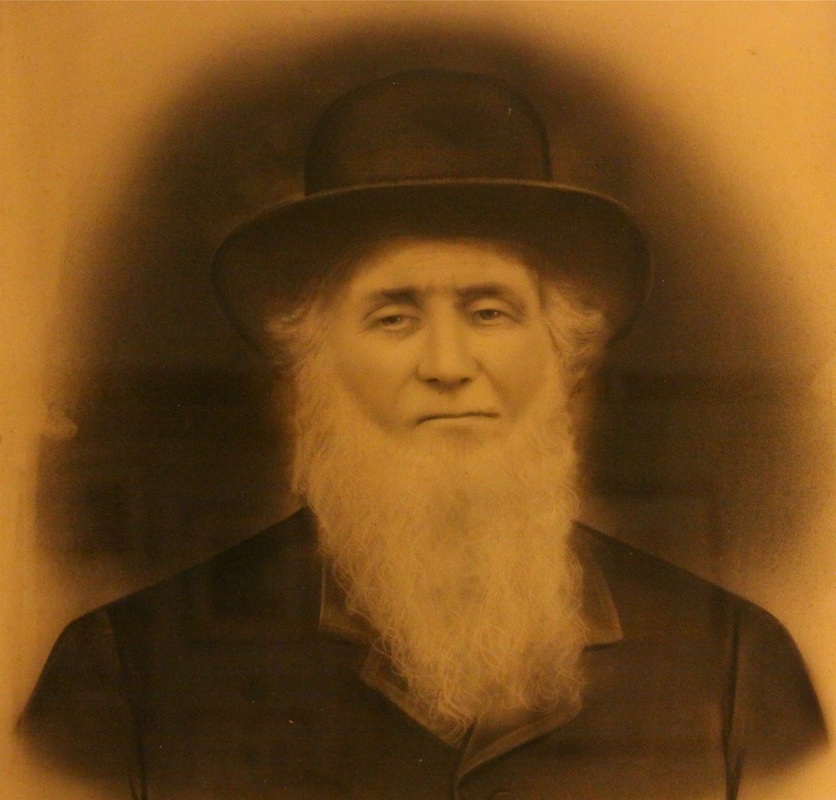 Normally on Sundays I try to post a story I have written. But yesterday was the anniversary of the death of my great-great grandfather, John Fields, so I'm going to post the transcriptions of the obituaries I have for him, and then a few comments at the end... From an unknown newspaper - this article was pasted into a scrapbook that came down through my family. I don't know if it was kept by my grandmother or one of her sisters. But because the clipping was glued in the scrapbook with no reference to the paper or date, I can only surmise it was from an Amador County Newspaper written in late February 1901. The Late John Field: John Field, after a lingering illness, died in Amador City on the 20th ultimo. He was a native of Ireland, being born in the county of Maith, 26 miles from the city of Dublin, October 11, 1801. When but thirteen years of age he started out to make his own living, and being an industrious, honest and faithful employee, he worked for one gentleman for a period of sixteen years. In 1840 he left Ireland and came to Boston and six years after he came to San Francisco.[1] In 1857 he came to Amador City where he remained up to the time of his death. Mr. Field was one of God's noble men, being loved and honored by all who knew him, and he will long be remembered by his many friends in Amador City, who sadly mourn his loss. He lived a pure and holy life and died a happy death. The interment took place from the Catholic church in Sutter Creek on the 22d of February, of which he was a member. He was buried by the side of his wife, to whom he was united in marriage many years ago in Boston, who preceded him to the grave eleven years ago. Scarcely a day passed during his last illness that he did not mention her name. Let us hope that they are united in Heaven, where sorrow never enters and where parting is unknown. May his soul rest in peace. A Second obituary I have for him, again, pasted into the scrapbook AMADOR CITY - Wm Fields who was probably the oldest citizen of Amador County passed from life unto death last Tuesday morning at the advanced age of 99 years and 10 months. Mr. Fields was born in Ireland, but became identified with Amador County when many of its gray haired men and women were children and to many of them he was more like a father than a neighbor and friend. He was a man of many striking qualities of mind and heart, generous kind and honorable. He was a member of the Catholic Church of Sutter Creek and within a short time of his death walked to and from the church with the vigor of youth. As we go to press Father Maloney before a large congregation of devoted friends and relatives is paying an eloquent tribute to the man whose upright life endeared him to so many. Deceased leaves a daughter Mrs. Mary Jane Hardy and three grandchildren to mourn his loss.[2] Here are two more pieces, both from the Amador Ledger: Amador City Mr. Fields, one of Amador's oldest citizens, is on the sick list. [Later: -- Mr. Field died Wednesday afternoon, Feb. 20, at the age of 99 years and 4 months.] and Nearly a Centenarian There died of la grippe at Amador City last Wednesday afternoon one of the oldest men in Amador county. His name was Field. For many years past he has made his home with his daughter, Mrs. J. Hardy, in Amador, though ninety-nine years of age he had been seldom afflicted with sickness. Mr. Field leaves a daughter, Mrs. Jeremiah Hardy, and several other relatives in Amador City. He was born October 19, 1801.[3] I have been smitten with John Fields since my childhood, probably because of the picture of him that hung in my Great Aunt Ida’s home. He has a long white beard and such kind and soulful eyes. I now have the picture hanging in my dining room and at Christmas-time, I tape a Santa hat upon his head. My Grandma Brown, John’s granddaughter, told me a few stories when I was a girl. She said that her mother, Mary Jane, and her parents, John and Mary Devlin Fields, sailed from Boston to San Francisco. It was a long journey with quite rough seas around the Horn. They brought a rocking chair with them. I recently tracked down an 1850s era bible that I believed belonged to John and Mary Fields, and I’m pretty sure he could hear all the way up in heaven my disappointment as I discovered he had not written one word in it – the lovely pages between the Old Testament and New Testament where he could have (SHOULD HAVE!!!!) written the family genealogy were completely blank. John, if you’re reading this from heaven, throw a record or two my way, will ye. Pleeeeease! [1] Clipping indicates "six years after (1846) he came to San Francisco" I believe this is an error. His daughter, Mary's, death certificate indicates she was born in Boston, Massachusetts, January 1, 1854, and the 1860 census of Amador County shows John, 60, Mary, 40, both born in Ireland, and Mary Jane, 6, born in Massachusetts. I would presume the word "six" should be interpreted as "sixteen". [2] Note that there is some inconsistency in these two obituaries. If he was born in October 1801 as the first obituary states, he could not have been 99 years and 10 months (notation in second obit) in February of 1901 (from first obit). Also, every document, census, etc that I have for him indicates his name is John Field/Fields, and I believe the name “Wm” mentioned in the obituary is in error. [3] Amador Ledger, 22 February 1901, page 3 |
AuthorMary Kircher Roddy is a genealogist, writer and lecturer, always looking for the story. Her blog is a combination of the stories she has found and the tools she used to find them. Archives
April 2021
Categories
All
|
